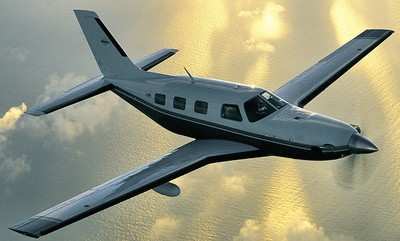Piper Malibu On Post-Maintenance Test Flight Went Down In The Spokane River
The NTSB's preliminary report from a May 7 accident involving a Piper Malibu that resulted in the fatal injury of the two people on board indicates that the pilot reported control problems with the airplane before it went down.

According to the report, on May 7, 2015, at 1604 Pacific daylight time, the Piper PA 46-350P, N962DA, collided with water in the Spokane River following an attempted landing at Felts Field Airport, Spokane, Washington. The airplane was owned by Flying Colors Aviation LLC, and operated by the pilot under the provisions of 14 Code of Federal Regulations Part 91. The commercial pilot and pilot rated passenger sustained fatal injuries and the airplane was destroyed during the impact sequence. The local flight departed Felts Field at 1553. Visual meteorological conditions prevailed and no flight plan had been filed.
The airplane had just undergone an annual inspection at the facilities of Rocket Engineering, and the accident flight was to be a post-maintenance test flight. Both the pilot and passenger were employees of Rocket Engineering, and the planned flight time was about 40 minutes.
Audio and preliminary radar data provided by the FAA captured the entire flight sequence. The accident was also observed by multiple witnesses at the airport, along with air traffic control personnel in the control tower.
The airplane departed from runway 4L, and radar data indicated that almost immediately after takeoff it began a climbing 10 degree turn to the right. After flying on that heading for about 1.5 miles, the airplane began a more aggressive turn to the right, reaching 1,000 ft above ground level (agl) while on a southbound heading. The tower controller asked over the traffic advisory frequency, if everything was ok, and the pilot responded, "that's negative". The airplane's turn radius then tightened to about 700 ft, and within about 45 seconds it had turned an additional 270 degrees while descending about 600 ft. Control tower personnel stated that during this period the airplane was banking about 90 degrees to the right and descending, and that they assumed it was about to crash. A short time later the bank angle began to reduce, and the airplane appeared to recover. The airplane then began a meandering climb to the east, and about 2 1/2 minutes later the pilot reported, "We are trying to get under
control here, be back with you".
The airplane eventually reached the town of Newman Lake, about 11 miles east of the airport, having climbed to about 5,600 ft mean sea level (4,000ft agl), and the pilot reported, "things seem to be stabilizing", and when asked his intentions by the tower controller he replied, "We are going to stay out here for a little while and play with things a little bit, and see if we can get back."

The airplane began a gradual left turn, and the pilot requested and was approved for a straight in landing for runway 22R. The airplane became aligned with the runway about 7 miles east of the airport, and a short time later the controller asked the pilot the nature of the emergency, to which he responded, "We have a control emergency there, a hard right aileron". The flight progressed, and a few minutes later he reported that the airplane was on a three mile final. The airplane remained closely aligned with the runway centerline throughout the remaining descent, and control tower personal stated that having reached the runway numbers the airplane appeared to be flying in a 20 degrees right wing low attitude.
The tower controllers along with multiple witnesses reported that as the airplane passed close to taxiway D the engine sound increased and the airplane began a sharp roll to the right. It subsequently collided with the river just north of the airport.
Both wings along with the horizontal stabilizer and elevators separated during the impact sequence, and the forward cabin sustained crush damage through to the area of the main wing spar. The river was about 25 ft deep at the accident site, and all major airframe components sank within a few minutes of impact. The airplane was recovered by a diving team from the Spokane County Sheriff's department over a two day period during the week following the accident.
(Image from file. Not accident airplane)
 ANNouncement: Now Accepting Applications For Oshkosh 2024 Stringers!!!
ANNouncement: Now Accepting Applications For Oshkosh 2024 Stringers!!! Aero-News: Quote of the Day (06.13.24)
Aero-News: Quote of the Day (06.13.24) ANN's Daily Aero-Term (06.13.24): Dead Reckoning
ANN's Daily Aero-Term (06.13.24): Dead Reckoning ANN's Daily Aero-Linx (06.13.24)
ANN's Daily Aero-Linx (06.13.24) ANN FAQ: How Do I Become A News Spy?
ANN FAQ: How Do I Become A News Spy?




